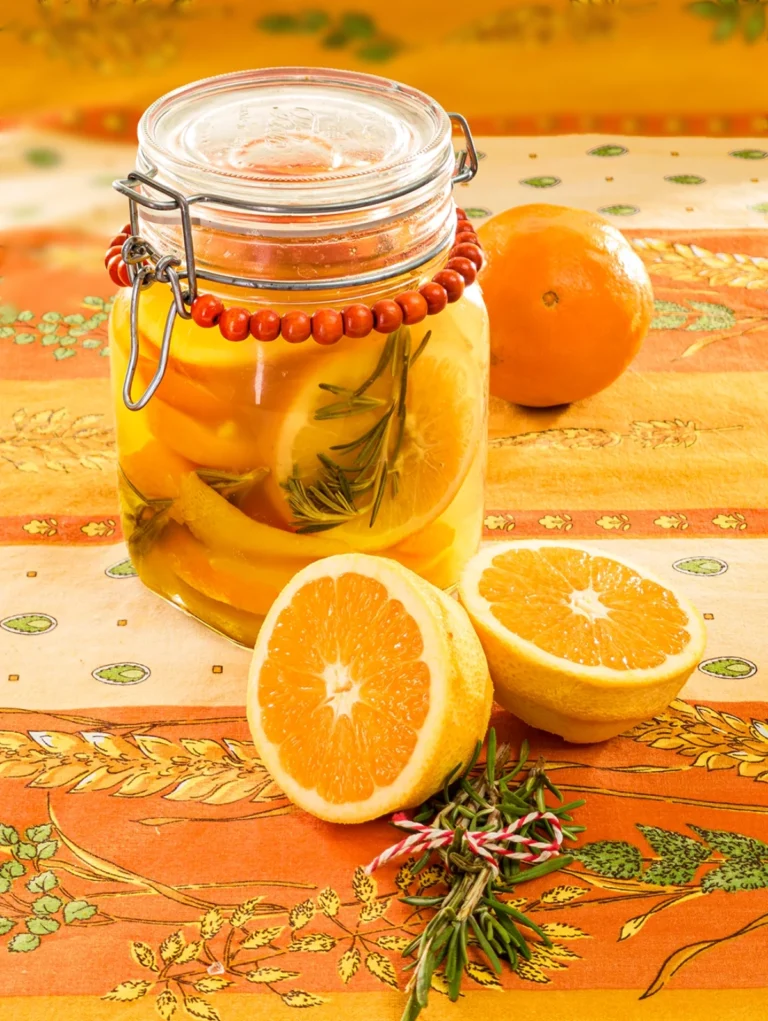Ingredients
- 700g organic oranges
- 21g sea salt or other natural untreated salt
- 7g sugar
Instructions
Preparing the Oranges:
Wash the oranges in hot water. Then, rub them dry with a kitchen towel.
Cut three oranges into slices about 5 mm (approx. 0.2 inches) thick.
Take out the seeds and throw away the ends.
Peel one orange with a potato peeler and add the peel to the orange slices.
Squeeze the juice out of the orange with a citrus juicer – set aside for now.
Filling the Preserving Jar:
Mix the salt and sugar in a bowl.
Take the cleaned preserving jar and add two spoonfuls of the salt mixture.
Start layering the orange slices/peel and alternate layers of oranges and salt mixture.
Sprinkle the salt between the layers. If desired, you can add washed herbs and peppercorns in between.
Fill the jar almost to the top, and add the orange juice.
Use a ferment glass weight on top (or a glass bowl), to keep the fruit under the liquid. If there’s not enough liquid to cover them right away, just close the jar and wait a day. If there’s still not enough liquid the next day, top it up with boiled water until everything is fully covered.
Leave the jar to ferment at room temperature.
Monitoring the Preserved Oranges Fermentation Process for around 3 to 4 weeks:
Swirl the jar every three days to distribute the salty liquid evenly.
Every three days, you should open the lid of the jar very briefly to release excess CO₂. If you can hear bubbles or a slight hiss, it indicates that the fermentation is active!
After around 3-4 weeks, fermentation is complete, so you can stop opening the lid regularly.
Notes
Check for any signs of them turning bad, like weird taste, bad smell, or visible changes like mold! When in doubt, throw it out!
Trick to speed up fermentation: If you have an old jar of fermented oranges: Take a few spoonfuls of the brine and add it to your new batch. The good bacteria in the old brine will help kick-start the fermentation process.
- Prep Time: 30 Minutes
- Fermentation Time: 4 Weeks
- Category: Seasoning
- Method: Preserved
- Diet: Vegan
